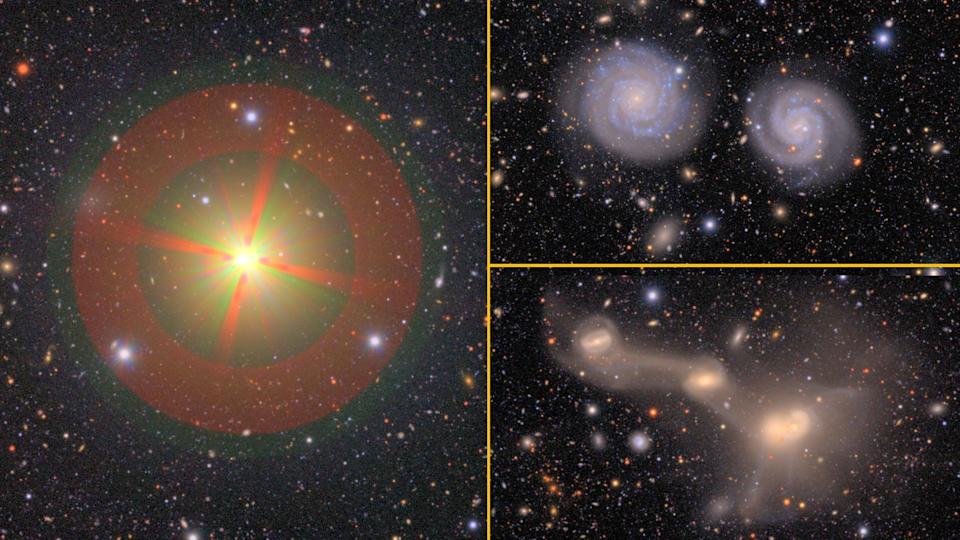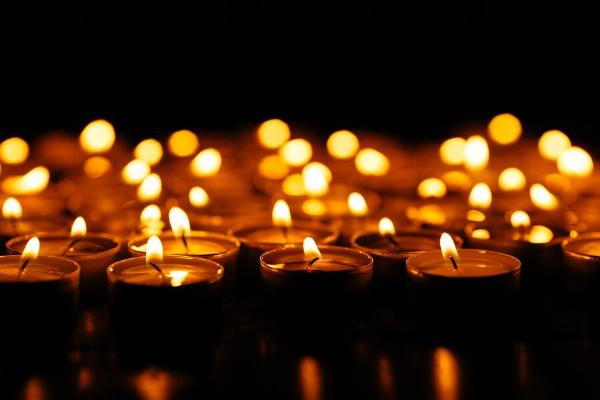Vera C. Rubin Observatory Unveils First Images: A Time-Lapse Movie of the Night Sky

The Vera C. Rubin Observatory has just unveiled its first batch of images, captivating the world with one of the most detailed snapshots of space ever taken. Using the world's largest digital camera, the Rubin Observatory will spend the next 10 years taking a time-lapse movie of the entire night sky. The complete 3,200-megapixel image is so vast and detailed that it's beyond the comprehension of human eyes, but the Rubin Observatory team has made a zoomable, searchable version available on their website. One of the most stunning sights in the image is the "grand design" spiral galaxy Messier 61 (M61), located an estimated 55 million light-years from Earth. Arranged face-on, M61 flexes strong, well-defined spiral arms and boasts a bright galactic core housing a supermassive black hole. You can spot it in the bottom center of the image of the Virgo Cluster, just below a smaller, bluer spiral galaxy. Another remarkable sight is a triple-galaxy collision in the upper-right corner of the image. While some individual spiral arms are still visible, the trio of galaxies are becoming visibly stretched in a gravitational tug-of-war that's slowly pulling them together into one great, gassy gumbo. Bridges of matter stretch between the contorted galaxies as they slowly merge. Such pileups are common; scientists theorize that our own Milky Way has merged at least a dozen times over the past 12 billion years. The image also captures a bright, nearby star within our own Milky Way, located millions of times closer than the Virgo Cluster. Identifiable by their propeller-like diffraction spikes and reddish glow, these stars are separated from faraway galaxies by the effects of light scattering inside the telescope's optics. The image also shows a gargantuan galaxy cluster containing an estimated 2,000 galaxies orbiting in relatively close proximity to each other. By squinting far beyond the foreground objects in the image, we can see what a galaxy cluster looks like from the outside. Each fuzzy, orange splotch of light is a galaxy containing billions of stars, located billions of light-years from Earth. Faint lanes of gas and dust bridge the gaps between the distant galaxies. Finally, there's a pair of spiral galaxies that appear to have a healthy respect for each other's personal boundaries. While the galaxies appear side by side, one is located much deeper in space than the other. The galaxy on the right (NGC 4411) is about 50 million light-years away from Earth, while its partner on the left (NGC 4411b) is more than 70 million light-years distant. With plenty of space between them and both oriented face-on toward Earth, we get to enjoy
The Vera C. Rubin Observatory's initial exposure of the night sky in a time-lapse movie from its inaugural images is nothing short of astounding - showing us a universe that appears more alive and dynamic than ever before, highlighting humanity’s relentless pursuit for cosmic insights.
The debut of the time-lapse movie from Vera C. Rubin Observatory captures our collective imagination with its breathtaking view into deep space, revealing cosmic mysteries that we've never seen before.
Vera C. Rubin Observatory's debut of its first night sky time-lapse movie is a breathtaking astronomical achievement, revealing previously unseen cosmic landscapes and pushing the boundaries of our understanding with every captured frame.
The Vera C. Rubin Observatory's unveiling of its initial images in the formidable Time-Lapse Movie is a testament to humanity’genius for exploring cosmos - each frame an awe, inspiring wonder at nighttime expanses we couldn‘t previously imagine.
A treat for the senses! The Vera C. Rubin Observatory's first images, presented in a captivating time-lapse movie of our night skies reveal never before seen wonders; an epochal leap forward towards understanding how galaxie come into existence and evolve.
The Vera C. Rubin Observatory's unveiling of its first images in the form a time-lapse movie showcasing our night sky promises unprecedented insight into celestial wonders, reminding us that there is still vast cosmic territory waiting to be explored and understood.
Vera C. Rubin Observatory's inaugural images unveil a mesmerizing time-lapse movie of the universe, stirring wonder and awe in equal measure while progressing our knowledge boundaries."
The debut of Vera C. Rubin Observatory's time-lapse movie capturing the night sky is a transformative glimpse into our celestial realm, revealing new depths and hues never before seen by human eyes.
The Vera C. Rubin Observatory's unveiling of its first images, showcasing a mesmerizing time-lapse movie capturing the intricacies and wonders of our night sky in stunning detail—an awe–inspiring achievement that illuminates new frontiers for astronomy.


![Isothermal Bags Containers Market [2028]: Top Trends, Size, and Competitive Intelligence - TechSci Research](https://antiochtenn.com/zb_users/upload/2025/07/20250719012446175285948669203.jpg)











